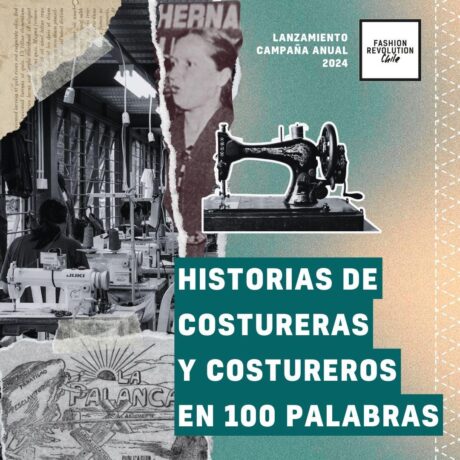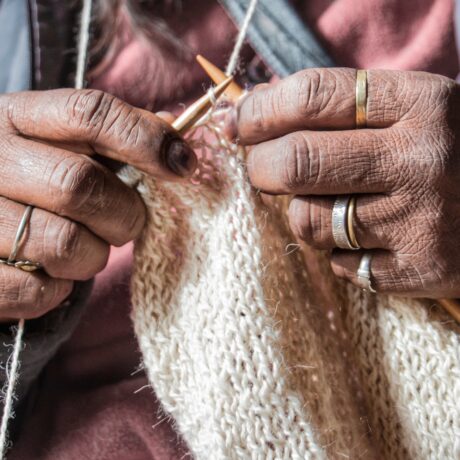What does traditional culture have to contribute to the Fashion Revolution?
Tamay & Me is a fascinating collaboration of two women from two sides of the world, from two entirely different cultures. They make hand spun and woven, indigo jackets with exquisite reclaimed embroidery details. Their mission is to create conversation about the best bits of ancient and modern culture using clothing as a starting point.
Tamay comes from the Red Dzao an ethnic minority group who live in the mountains in North Vietnam. Hannah, the Me part of Tamay & Me, is originally an anthropologist based in Bristol in the UK. They met in 2008 when Tamay taught Hannah the extraordinary detailed Dzao embroidery, sitting together for 3 months, since then they have been the best of friends.
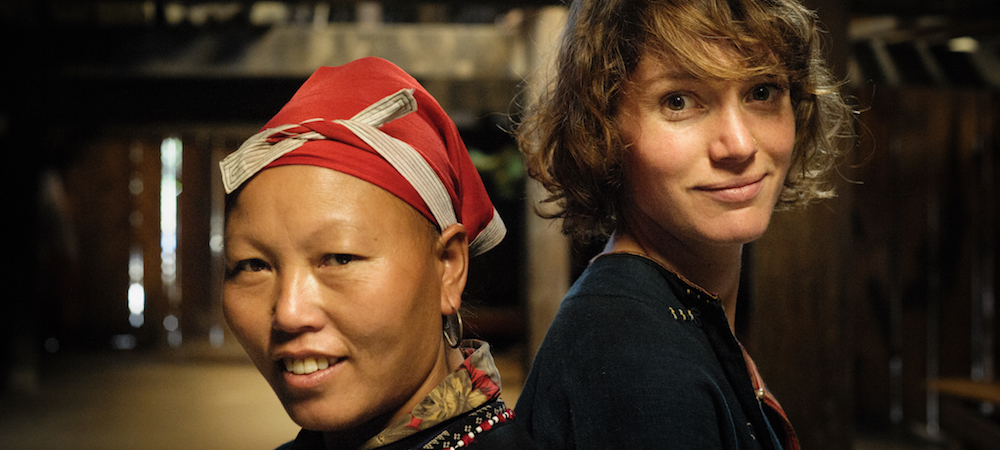
Hannah shares with us a fascinating insight about the Dzao way of wearing clothes…
The Dzao people live and breathe ethical. In the West, we are trying to re-find a way of wearing clothes that doesn’t cost the earth. The Dzao have been doing it for centuries, in the most beautiful way.
The Dzao make all their own clothes. They make them with pride to show off their skills and their identity. Every year a Dzao woman will make themselves a new set of clothes. A pair of trousers covered in embroidery and a jacket with the finest tail piece, sleeve embroidery and another panel of embroidery on the back, so much embroidery!

When they go to the market, when they are on the bus, on the back of a motorbike, visiting other towns and cities they can be spotted from far away as Dzao. They can even be identified as to which village they come from. Everywhere they go they carry a clear, visual expression of where they come from and move around with a sense of belonging. It is just in the same way as so many sub-cultures do in the West. This is what clothing is all about; beyond keeping us warm and dry, what we put on in the morning is an expression of our own identity and so often a group or culture that we belong to. Function and belonging is the purpose of clothing and for so many cultures across the world – it is important, clothes matter.

What the Dzao do, which is unusual, is they spend hours and hours, weeks and months making these clothes. They respect themselves for making their clothes and they respect each other for making their own clothes. Embroidery is valued, indigo cloth is valued. It is the process of making that is valued. Value lies in the time spent to make something, value lies in the quality of the materials that go into making the garment and value lies in the concentration and the skills required to make too. Through making your own clothes the Dzao understand that this makes you a stronger person. Making embroidery is a sort of meditation, it requires being present and getting on and doing. When you are making embroidery there is a sense of calm that happens, not only that, but a sense of satisfaction too. You are the creator of something extremely beautiful and it happens as you do it.
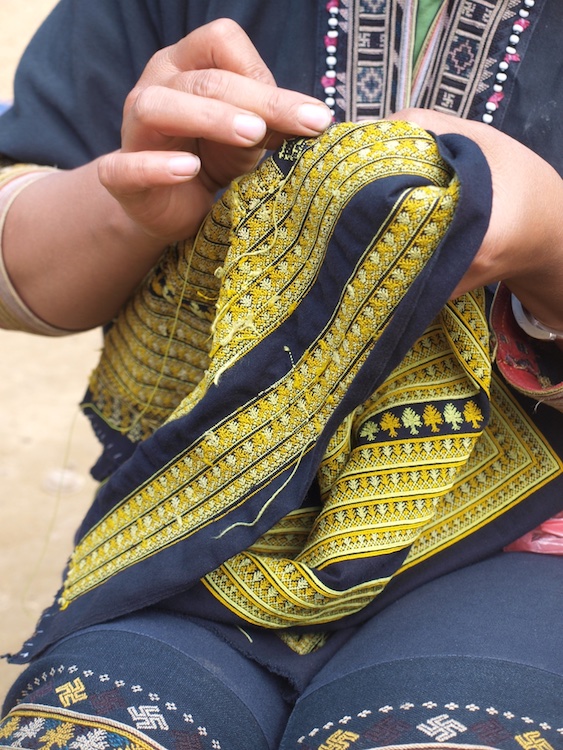
In the 8 year time period that I have known the Dzao their lives have catapulted from an ancient world with no electricity in their homes, access to only local foods, all homegrown, handmade clothing and a completely independent cultural community with their own practices and beliefs. To the modern Asia, internet, smartphones, washing machines, rice-cookers, education, an intertwined community with modern Vietnam. It is a huge time of change for the Dzao culture and a time that challenges the traditional way of making clothes and wearing clothes.
This change is happening synchronously as we in the West are tired of bad quality garments, exploitation, throwaway culture and chemical production, everything that Fashion Revolution stands against.
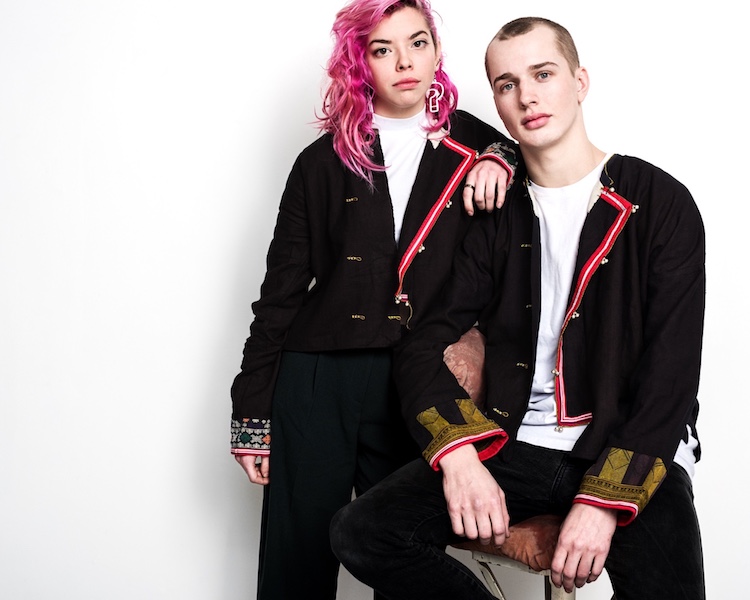
Tamay & Me have designed a series of jackets around the skills and the needs of the Dzao and the Black Tay people. The jackets are based on a traditional men’s style from these mountains and worn by men across the region to work in the fields, in everyday life and also for special occasions. Tamay is a figure head in her village in North Vietnam and is passionate to share the story of her culture’s embroidery and also to ensure that wealth is equally distributed in the village. She organises production. The cloth comes from a nearby Black Tay village where the families grow, spin and weave the organic cotton on hand looms in their homes, as they always have done. This cloth is much more expensive than manufactured cotton from China and so losing popularity in the local market. Like so many other handmade products it stands the test of time in another way becoming, more and more beautiful with time. The weavers work closely with the indigo dyer who dyes the different coloured tones of fermented indigo in her back garden using two buckets. She also uses her own homegrown indigo. Since working with Tamay these families have been able to pay for their kids to go onto further education.

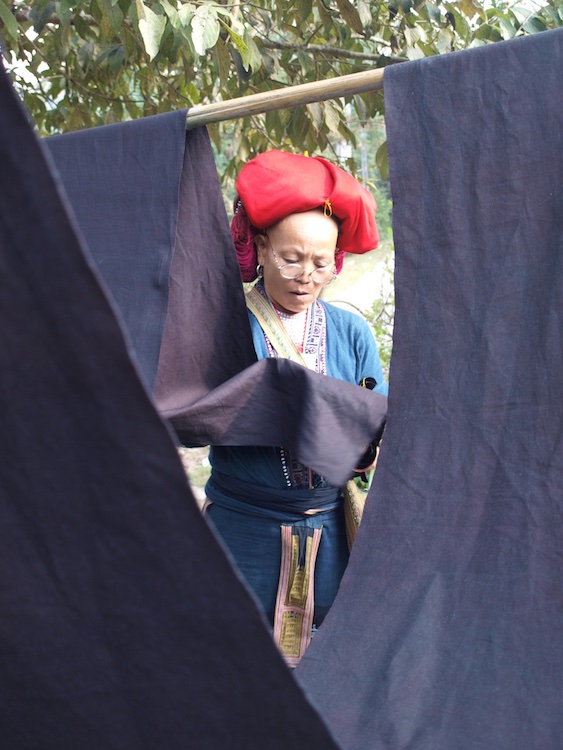
The embroidery for the jackets is carefully bought from families who really need money in Ta Phin village where Tamay lives. Tamay buys pieces that have been reclaimed from old clothes so that people continue primarily to make clothes for themselves. The jackets are finished with hand plaited silk, appliqué work and metal buttons, all also sourced from local traditional artisans. Phan Ta May, Chou and his wife May make the jackets into finished garments. They work from home in their own time, delighted to be able to have a regular income away from the tourist industry that they can pick up and put down with family life. Chou works on the industrial sewing machine in the house and May works on the terrace doing the hand-stitching.
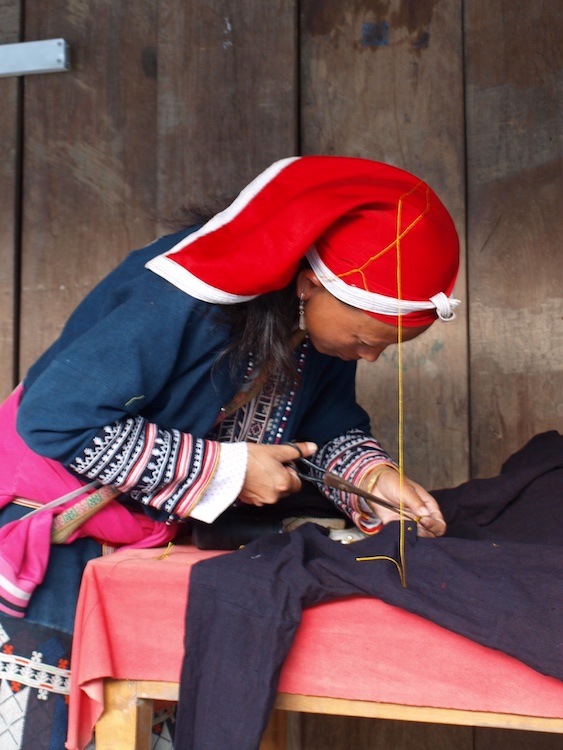
Every step of the Tamay & Me jackets celebrates the way the Dzao make and wear clothes. The Dzao are a rare community to still be making clothing in this way. They have a lot to teach the world. It is so important that we all understand where our clothes come from, just like our food. If we know how clothes are made then we are happy to pay for them and we want to look after them and wear them for longer. It is going to take a long time but it is beginning to happen.
I am always delighted to see how people react when I explain where every component comes from. It surprises people and is always a conversation starter, a mini Fashion Revolution happens!
The Dzao clothes don’t really have anything to do with fashion and perhaps that is what is wonderful about them. I love being able to bring them into the fashion world to inspire a response. The Dzao way is the traditional way and the Dzao show that it is possible to live well with less and be beautiful.
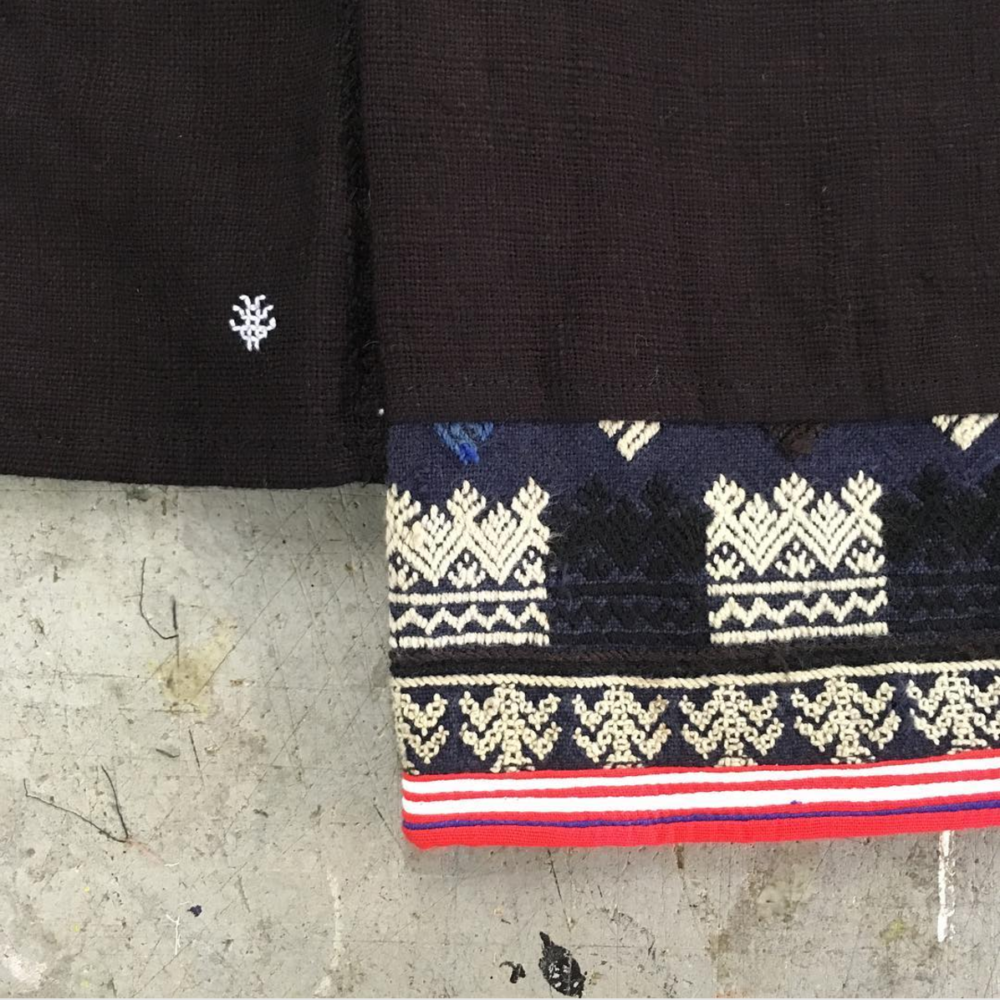
Follow Tamay & Me on instagram @tamayandme / www.tamayandme.com




